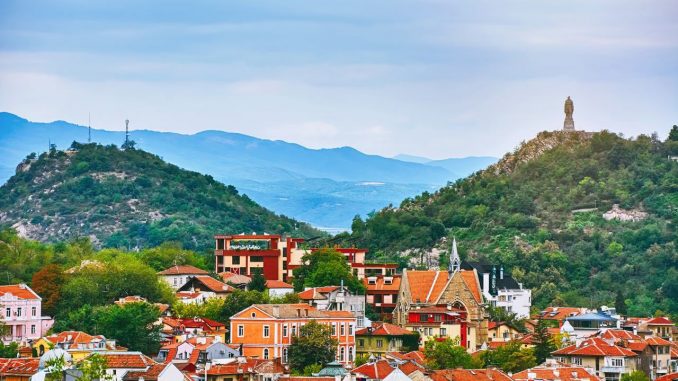
The 2019 European Capital of Culture and second largest city in Bulgaria, Plovdiv is one of the top tourist destinations in the country and the eastern Balkans.
There’s a huge number of things to do in Plovdiv, mostly thanks to its incredibly long history and rich cultural heritage.
Spread across seven hills in a fertile region in south-central Bulgaria, the area that now makes up Plovdiv has been inhabited for no less than 8,000 years.
The first Neolithic settlements discovered here date back to 6,000 BC. Since Plovdiv still exists, it’s often regarded as one of the world’s oldest still-inhabited cities. While there’s some debate among scientists about that, it’s certain that it’s one of the oldest cities in Europe.
Over the millennia, the city—known in Antiquity as Philippopolis—has been occupied by Thracians, Greeks, Romans, Huns, Bulgars, Slavs, western Crusaders, and Ottomans, among other peoples.
As such, it now has an exceptional wealth of historic architecture, is a center of arts and crafts, and has its fair share of excellent museums.
Top Things To Do In Plovdiv
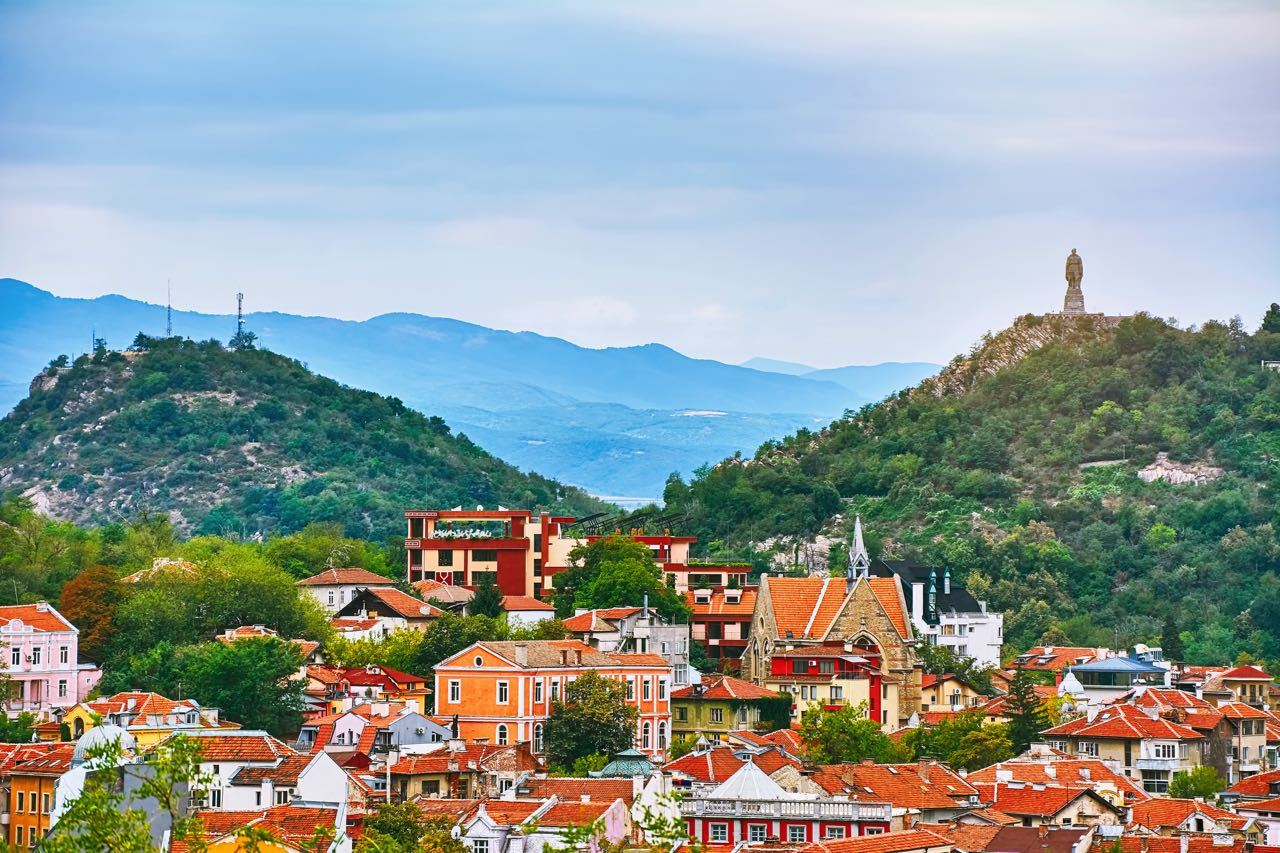
If you’re wondering what to see and do in Plovdiv, you’ll find plenty of options below. This list features all “mandatory” things to do in Plovdiv, the very highlights of this ancient city. You may not be able to visit them all in just one weekend, but I recommend trying your hardest!
If you only have one day, don’t miss the Old Town, Roman Stadium and Amphitheater, the Kapana Art District, and the Regional Ethnographic Museum. I’d focus on those places—the top attractions in Plovdiv. Let’s now dive in and take a look at the best Plovdiv activities in more detail.
Explore The Plovdiv Old Town
Situated on three different hills—Nebet Tepe, Taksim Tepe, and Dzhambaz Tepe—the Old Town of Plovdiv is where you’ll find most of the historic ruins and architecture, as well as several superb museums. It’s home to an extraordinary collection of ancient buildings, traditional houses, and cobblestones, a combination of structures from Antiquity, the Middle Ages, and Bulgarian Revival.
This is the beating heart of Plovdiv tourism, one of the most visited places in Bulgaria and home to many other attractions listed below. Start your visit here. Moreover, if you only have limited time in Plovdiv, this is the very area you should focus on. From restaurants and cafés to various museums and the top Plovdiv attractions, most of the action takes place in the Old Town.
Walk Through Medieval Hisar Kapia Gate
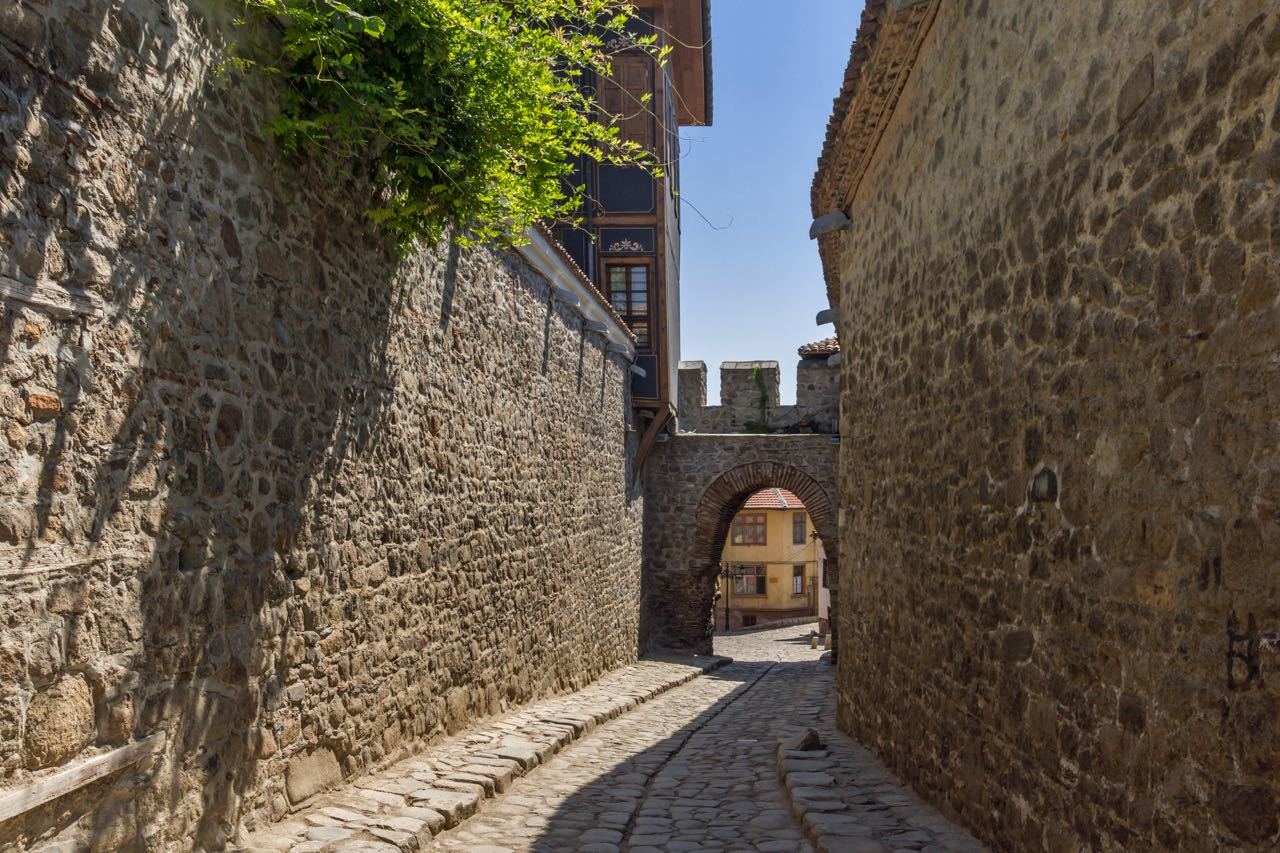
The Hisar Kapia Gate is in the Old Town and one of the top tourist sights in Plovdiv. Built in the 11th century, this wonderfully preserved medieval city gate was one of three entrances to ancient Plovdiv. This current gate was actually constructed on top of the foundation of a previous Roman gate.
During the Ottoman rule, Plovdiv’s wealthy merchants’ built houses over the fortified walls on both sides of the Hisar Kapia Gate. Nowadays, the ground floors of these houses still have the original medieval walls.
Explore Nebet Tepe
One of the first Plovdiv Hills to be inhabited by people, Nebet Tepe is home to settlements dating back to 4,000 BC. First the home of the Thracians, the village grew in size under Philip II of Macedon and Ancient Rome.
Eventually, it became the citadel of the Old Town. Now a beautiful hill filled with ruins, it’s one of the best places to visit in Plovdiv for an insight into the history of ancient Philippopolis.
An expansive archaeological complex lies atop Nebet Tepe, including the ruins of fortified walls and towers. It’s a monument of national importance in Bulgaria, as well as one of the most popular sights in Plovdiv.
See The Eastern Gate Of Philippopolis
One of only three discovered entrances to the ancient city of Philippopolis; the Eastern Gate was on the main road from the city to Byzantium (later Constantinople and modern-day Istanbul).
The first gate built on this site dates from the 2nd century and the reign of Hadrian. In the 4th and 5th centuries, restoration and reparation of this gated complex took place. It’s thought it was the largest and most important entrance to ancient Philippopolis.
All that remains now is a collection of ruins and the general layout of the gate complex. It’s one of many Ancient Roman attractions in Plovdiv.
See The Church Of The Holy Mother Of God
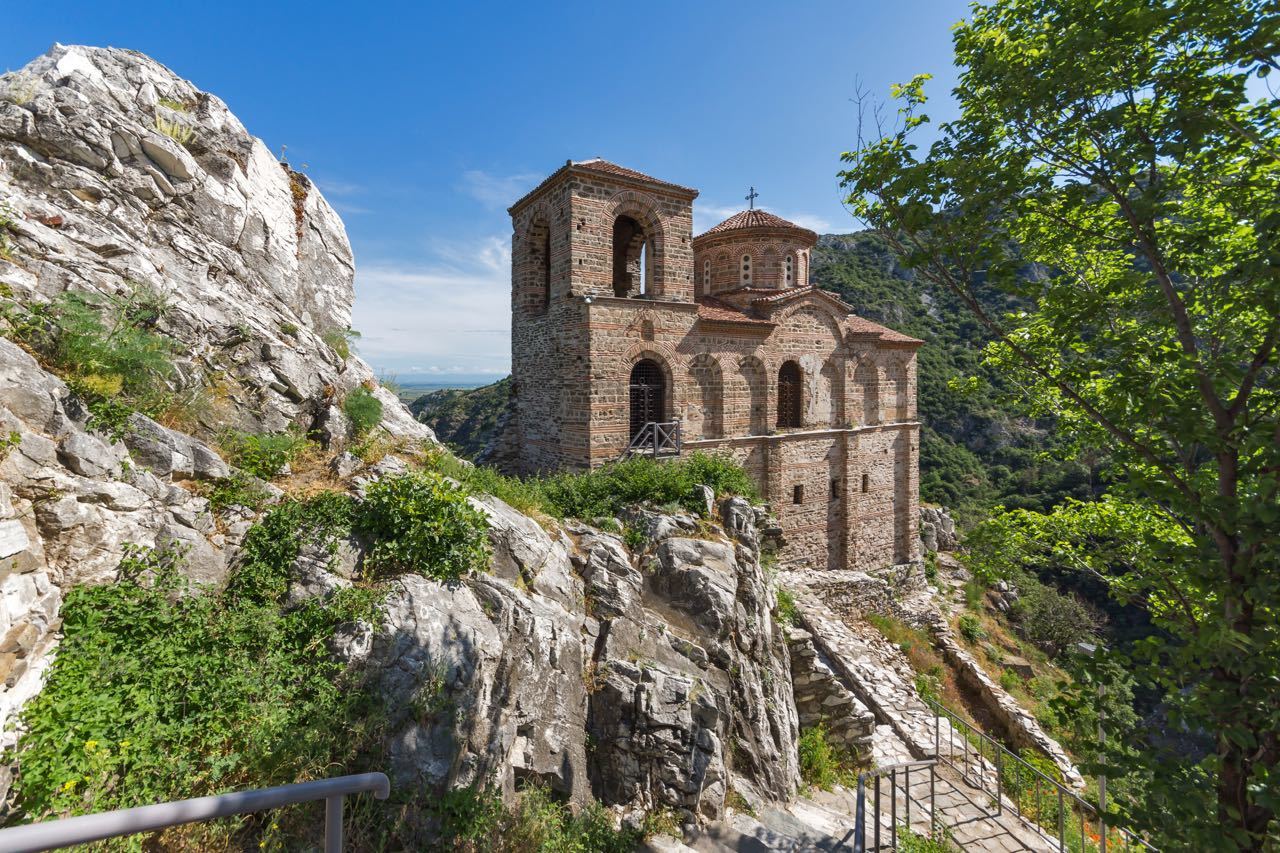
Located on Nebet Tepe in the Old Town, the Church of the Holy Mother of God is one of the most important churches in Plovdiv.
A church has stood on this site since the 9th century but was destroyed by the Ottomans when they conquered Plovdiv in the late-14th century.
The current building dates from 1844 when it was rebuilt as the main church in the city. This church and one of its bishops played a significant role in Bulgarian Orthodox Church’s struggle for autonomy. It has a strikingly beautiful tower as well as icons and frescoes.
Visit The Roman Stadium
One of the largest and best preserved Ancient Roman structures in the Balkans, the Plovdiv Roman Stadium is one of the top attractions in Plovdiv. Constructed in the early-2nd century by Emperor Hadrian, it was able to seat no fewer than 30,000 people. Fifty meters wide and 240 meters long, it was the setting of huge sporting events. Art, music and poetry contests used to accompany these events, too.
Nowadays, you can see the marvelously renovated northern part of the Roman Stadium. It’s one of the main landmarks in Plovdiv.
Watch A Concert At The Ancient Amphitheater
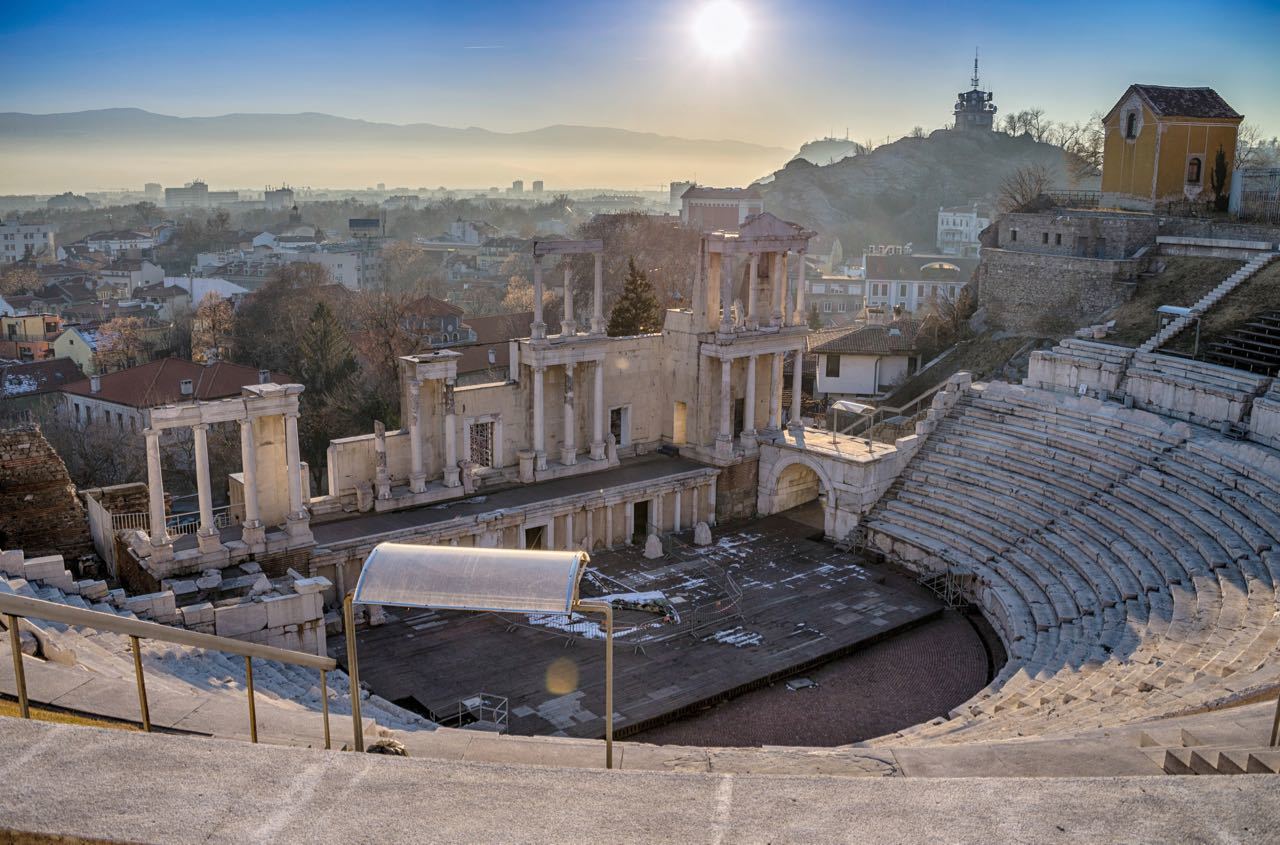
If you’re a fan of Ancient Roman architecture, you simply must visit the Ancient Amphitheater of Philippopolis.
It lies in the heart of the Old Town, in the saddle between Taksim Tepe and Dzhambaz Tepe. Dating from Trajan’s reign in the late-1st century and early-2nd century, it’s one of the world’s best preserved ancient theaters.
Historians presume that gladiatorial fights took place at this amphitheater, as well as theater performances and circus events. Damaged in the 5th century by Attila the Hun, it got buried and was eventually forgotten. It wasn’t until the mid-20th century that it was rediscovered thanks to a landslide. Its restoration is an absolute masterpiece, and the theater is now in use once again as a concert and theater venue (in summer). It can seat 5,000 to 7,000 people.
Visit The Church Of St. Constantine And Helena
Another fascinating historic building in the Plovdiv Old Town is the Church of St. Constantine and Helena. Named after Emperor Constantine the Great and his mother Helena, it’s one of the oldest churches in Plovdiv. It dates from the year 337.
Over the following centuries, it was destroyed and reconstructed multiple times. The present structure dates from 1832 and has gorgeous frescoes, icons, and paintings.
Enjoy Sunset Views From Dzendem Tepe
Situated in the western part of Plovdiv, Dzendem Tepe is the highest of the city’s seven hills. Having been home to a Bronze Age shrine (or even a small settlement), an important Roman Temple of Apollo, and a 4th-century basilica, the hill is now a natural landmark.
Towering over much of the rest of Plovdiv, its summit is a phenomenal spot to watch the sunset.
Wander Through The Kapana Art District
For a break from all that history and archaeology, head to the Kapana Art District, the liveliest neighborhood in Plovdiv. Until quite recently a neglected and overlooked part of the city, it’s its cultural heart.
The district itself is more than 500 years old, dating from a time when it was home to numerous craftsmen, such as cloth makers, tailors, blacksmiths, goldsmiths, and leather workers.
If you understand Bulgarian, you’ll notice many streets bearing the names of those crafts—translated as, for example, Iron Street and Gold Street. The name of the district literally means “The Trap” after its dense network of little streets and alleys.
In the 2010s, the Kapana Art District underwent extensive restorations. Many old buildings were renovated, empty storefronts became art galleries, and the entire area was made car-free. Nowadays, Kapana is home to countless art shops, galleries, wine bars, restaurants, and beer halls. It’s the perfect place to hang out on a sunny afternoon or after a well-filled day of sightseeing in Plovdiv.
See The Singing Fountains At Night
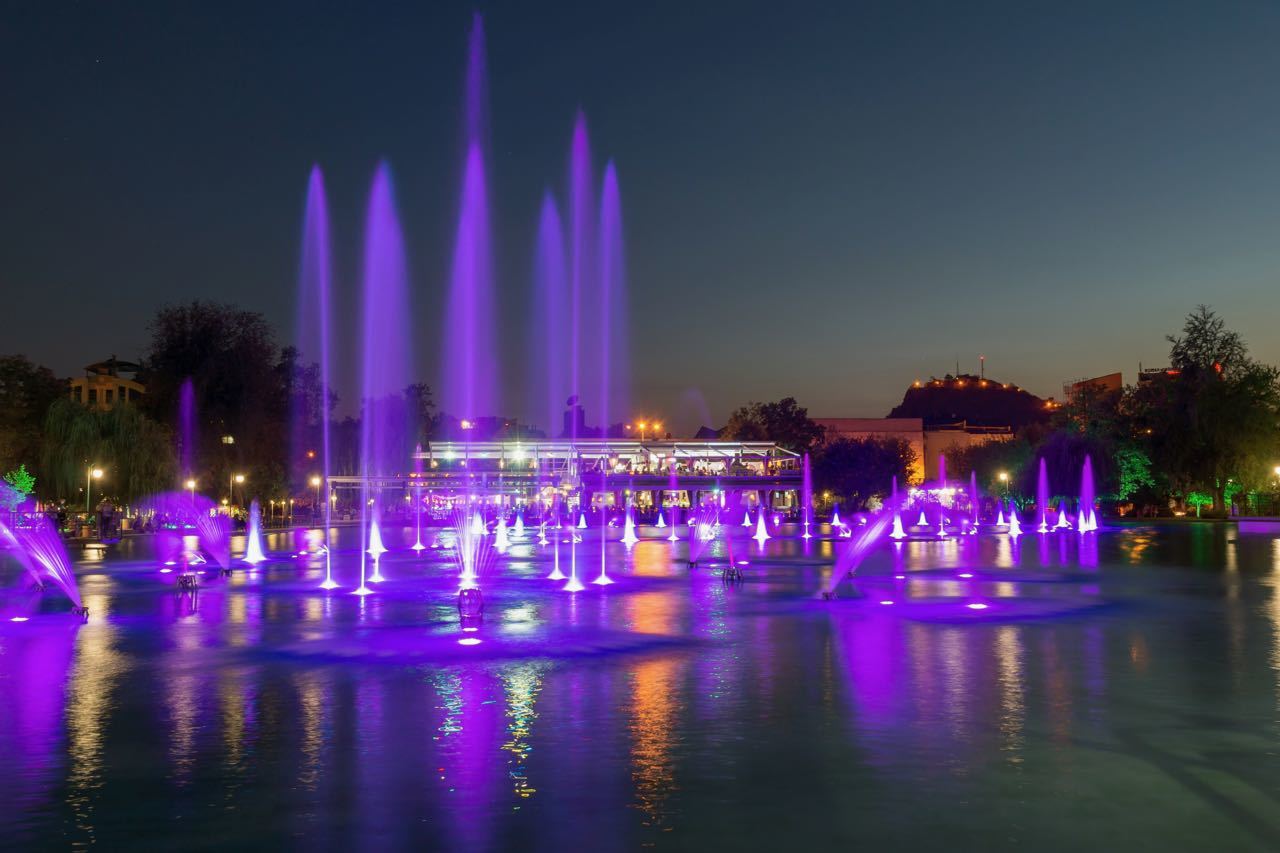
One of the most remarkable and fun things to do in Plovdiv is watching the Singing Fountains in Tsar Simeon’s Garden. Swiss landscape architect Lucien Chevalas designed this public park in 1892. It’s a lush and peaceful area within easy walking distance from the central Old Town.
Highlights include the Goddess Demeter Fountain, a Viennese Pavilion, modern children’s playgrounds, and flowerbeds. Quite literally the star of the show, however, are the Singing Fountains. Located in a lake in the park, this collection of fountains is the setting of light and music show that takes place every Friday, Saturday and Sunday evening at 9 p.m.
Admire The Dzhumaya Mosque
The presence of the gorgeous Dzhumaya Mosque is a testimony to the cultural diversity that so characterizes the eastern Balkans. Plovdiv’s main Muslim building, it stands in the city center west of the Old Town. The Ottomans built the original mosque in the 14th century on the site of the previous St. Petka Tarnovska Cathedral Church. In the 15th century, however, that first mosque was taken down and replaced by the current building.
Among its many features are nine large domes and a towering minaret — Wall paintings inside date from the late-1700’s and early-1800’s.
Visit Bachkovo Monastery
A 30-minute drive from Plovdiv brings you to the Bachkovo Monastery, a major Eastern Orthodox monastery on the bank of the Chepelare River. Founded in 1033, it was a large complex with many buildings. Currently, only one part survives from those earliest days. That’s the ossuary with its ancient frescoes and typical architectural style that doesn’t exist anywhere else in the world.
The monastery does include various other buildings, though, all constructed in subsequent centuries. Note-worthy highlights are the 17th-century Cathedral Church of the Virgin Mary, the “Panorama” Mural, and the medieval Church of the Archangels.
Go For A Trip To Asen’s Fortress
Asen’s Fortress lies on the way to the Bachkovo Monastery, in Asenovgrad. This imposing medieval stronghold is one of the top castles in Bulgaria to visit. Perched atop a rocky outcrop, it is only accessible from one side. The three other sides have nearly vertical drops in the valley below.
Dating from the Middle Ages, Asen’s Fortress went through several sieges, including the conquest by the armies of the Third Crusade and, later, the Ottomans.
After the 14th-century Ottoman conquest, the castle was left to decay. Now, only one complete building still stands. That is the 11th– and 12th-century Church of the Holy Mother of God, which is still in use as a Bulgarian Orthodox church. The rest of this once-mighty fortress are ruins, although quite well-preserved ruins.
Have Some Water Fun At Aqualand
While all other things to do in Plovdiv described above have something, or everything, to do with culture and history, this last one is just plainly about having fun. Aquapark “Aqualand” is arguably the most well-known modern attraction in the city.
This large water park is a great place to take your kids if they’re tired of walking around and sightseeing in Plovdiv. It features lounge areas, a children’s pool, tubing, and thrill slides.
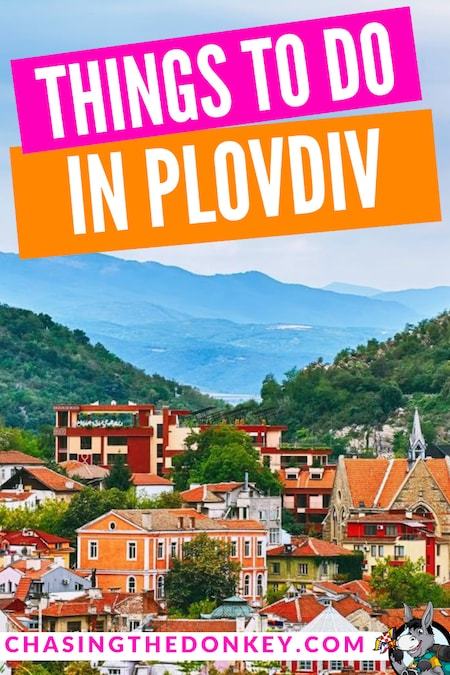
PIN THIS!
Best Museums In Plovdiv
As one of Europe’s oldest cities, Plovdiv has a massive amount of history and cultural heritage. After reading about the things to see in Plovdiv above, you’ll now know all about that, too. However, if you’d like to learn even more about the city’s millennia-long history, I recommend visiting the following Plovdiv museums.
Regional Ethnographic Museum Plovdiv
Housed in the former residence of 19th-century merchant Argir Kuyumdzhioglu in the Old Town, the Regional Ethnographic Museum is one of the best museums in Plovdiv. It has six different exhibits, all located in separate rooms in the house.
Those exhibits house several thousands of artifacts and objects. They range from furniture, clothing, and fabrics to religious items, music instruments, books, and works of art.
Balabanov’s House
Much like the Regional Ethnographic Museum, Balabanov’s House also houses various cultural and historic objects. This 19th-century house near St. Constantine and Helena Square boasts a beautiful exterior. Inside, you’ll find antique furniture, carved-wood ceilings, clothes and other items showcasing how affluent Plovdiv residents used to live in the 1800s.
Similar preserved homes of influential Plovdiv residents in the city include Hindlyan’s House and Lamartine/Mavridi’s House.
Plovdiv National Archaeological Museum
Officially opened in 1882, this is one of the oldest museums in Bulgaria. The National Archaeological Museum in Plovdiv now houses one of the largest and most important cultural heritage collections related to Plovdiv and the surrounding region. It has no fewer than 100,000 items and objects.
This fantastic history museum focuses on the early history of Plovdiv, from prehistoric times through the Middle Ages, including the Thracian, Roman and early-Christian times. You’ll find numerous fascinating artifacts here, from ancient pottery and sculptures to Christian iconography and medieval art.
Plovdiv Regional Historical Museum
While the National Archaeological Museum covers Plovdiv’s ancient history, the Regional Historical Museum focuses on the 15th century through today. Established in 1951, this cultural and research organization preserves and studies Plovdiv’s more recent history.
The museum has four different exhibits, located in various locations in the city:
- The Unification of Bulgaria of 1885 – dedicated to the role Plovdiv played in the late-19th-century events, from the Treaty of Berlin that resulted in the division of Bulgaria into five regions to the 1885 Serbo-Bulgarian War.
- Bulgarian National Revival – housed in the former residence of mid-19th-century Greek merchant Dimitris Georgiadi, this exhibit covers the period of Ottoman rule in Plovdiv, from the 15th to the 19th
- Museum Center of Modern History – hosts seminars, presentations, and other public happenings, as well as art and photography exhibits.
- Book Publishing in Bulgaria – occupying six rooms in the house of Hristo G. Danov, a famous early-19th-century publisher, this exhibit traces the evolution of publishing in Plovdiv through the late-1800’s and early-1900’s.
Museum of Natural Sciences
Located in the old 1880 Plovdiv Municipality building, the Museum of Natural Sciences is one of the best things to do in Plovdiv for nature lovers. It’s one of the most important museums of its kind in Bulgaria, featuring impressive collections in the scientific realms of paleontology, botany, and mineralogy.
Several rooms are dedicated to wildlife, too. Arguably its main attraction is the enormous freshwater aquarium home to 40 different species. It’s Bulgaria’s largest freshwater aquarium.
The only question now is, where will you start in Plovdiv? And, if you have another suggestion for what to see in Plovdiv, leave us a comment below.
Other Bulgaria Travel Blogs You May Like
- Things To Do In Bulgaria
- Things To Do In Sofia
- Best Day Trips From Sofia
- Things To Do In Varna
- Bansko Ski Resort
- Bulgarian Festivals
- Rent A Car Bulgaria
- Most Beautiful Caves In Bulgaria

Leave a Reply